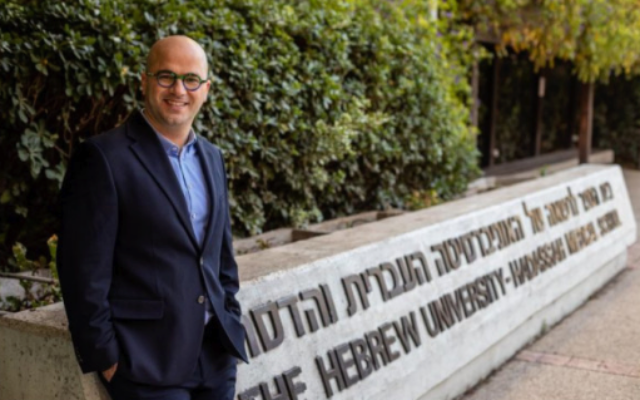Israeli Researchers Score Autism Research Breakthrough
Hebrew University team, led by Dr. Haitham Amal, believes that nitric oxide levels influence the development of autism.
Researchers in Israel have published what they believe is a breakthrough in developing a potential treatment for autism. The study, by Dr. Haitham Amal and a research team from Hebrew University in Jerusalem, indicates that there is a direct connection between nitric oxide, a common neurotransmitter in the brain and autism.
The study, which was conducted using mice as test subjects, showed that as levels of nitric oxide increased in the brain of the mice, indicators for the presence of autism also increased. Likewise, behavior that is associated with autism decreases as the level of nitric oxide was lowered “in a controlled manner.”

The research, which was published last month in the peer-reviewed, open-source journal, Advanced Science, is, according to Amal, the first direct connection between levels of nitric oxide and autism.
“By inhibiting the production of nitric oxide on laboratory animals, they became more social and less repetitiveness was observed in their behavior. Additionally, the animals showed interest in new objects and were less anxious. Finally, the decrease in nitric oxide levels led to a significant improvement in neuronal indices.”
Although the study of nitric oxide goes back to the 18th century, it was only in the late 1980s that scientists first realized the crucial role it plays in the functioning of the human body. Three American scientists shared the 1998 Nobel Prize for medicine for discovering its importance in the cardiovascular and nervous systems.
More than 30 years ago, Dr. Stanford Snyder at Johns Hopkins University described how small quantities of nitric oxide help brain cells to communicate and function efficiently. Just as in the Israeli research, too much of it can do significant harm. It has been linked to such degenerative diseases as strokes and Parkinson’s, Alzheimer’s, and ALS, or Lou Gehrig’s diseases.

According to a statement released by the researcher, the results were also based on tests that involved human stem cells and blood samples taken from children with autism that were described as low functioning.
If the research can be translated into effective therapies, it would be an extraordinary development in the treatment of autism. So far, a cure for autism, or even an attempt to treat it with a combination of drugs, doesn’t exist. There isn’t even a standardized test to diagnose it.
While physicians are able to treat some of the conditions that are associated with the disorder, like anxiety or aggression, most of the effort to date has been devoted to helping children learn important social and behavioral skills to assist them to function more effectively.
Even that has proved to be difficult, as the numbers of children diagnosed with autism has almost doubled over the past decade. According to the most recent data from the CDC released earlier this year, one in every 36 children was said to be affected by the disorder. In 2018, that number was one in 44. In 2010, it was one in 68. Today, it is the most common developmental disorder in the United States.
Whether the rise in numbers is attributed to better diagnoses or to other factors is uncertain, but in terms of sheer numbers it has been increasingly difficult to train enough professionals in the field. Just keeping up with the growing number is a challenge in itself.
One who knows that firsthand is Dr. Stormi White, who is the program manager at the Marcus Autism Center of Children’s Healthcare of Atlanta and an associate professor in the Emory School of Medicine.
“One of the biggest barriers in identifying children at our earliest ages is usually just systemic issues,” White says. “There are more and more people with autism, but we are not keeping up with the demand for trained specialists. So, people usually have to wait a long time to be seen.”
One of the biggest barriers in identifying children at our earliest ages is usually just systemic issues. There are more and more people with autism, but we are not keeping up with the demand for trained specialists. So, people usually have to wait a long time to be seen.
Another difficulty of translating the Israeli breakthrough into anything approaching a standard treatment are the wide variations in how autism manifests itself.
According to White, the quest for a cure is a frustrating task.
“When you have people that have so many different types of strengths and weaknesses, it can be hard from a research perspective to be able to take those findings and replicate them so that you feel really confident that your treatment is working.”
Earlier this year, Dr. Amal received a $400,000 grant from the Philadelphia Eagles Autism Foundation to continue his drug treatment research in nitric oxide.
“I am hopeful that, with our new understanding of the nitric oxide mechanism, we can begin to develop therapeutic drugs and help millions of children and adults living with autism around the world.”
- News
- Health and Wellness
- Bob Bahr
- Dr. Haitham Amal
- Hebrew University
- nitric oxide
- autism
- Advanced Science
- Nobel Prize
- Dr. Stanford Snyder
- Johns Hopkins University
- Parkinson's
- Alzheimer's
- ALS
- Lou Gehrig’s disease
- Dr. Stormi White
- Marcus Autism Center of Children’s Healthcare of Atlanta
- Emory School of Medicine
- Philadelphia Eagles Autism Foundation




comments